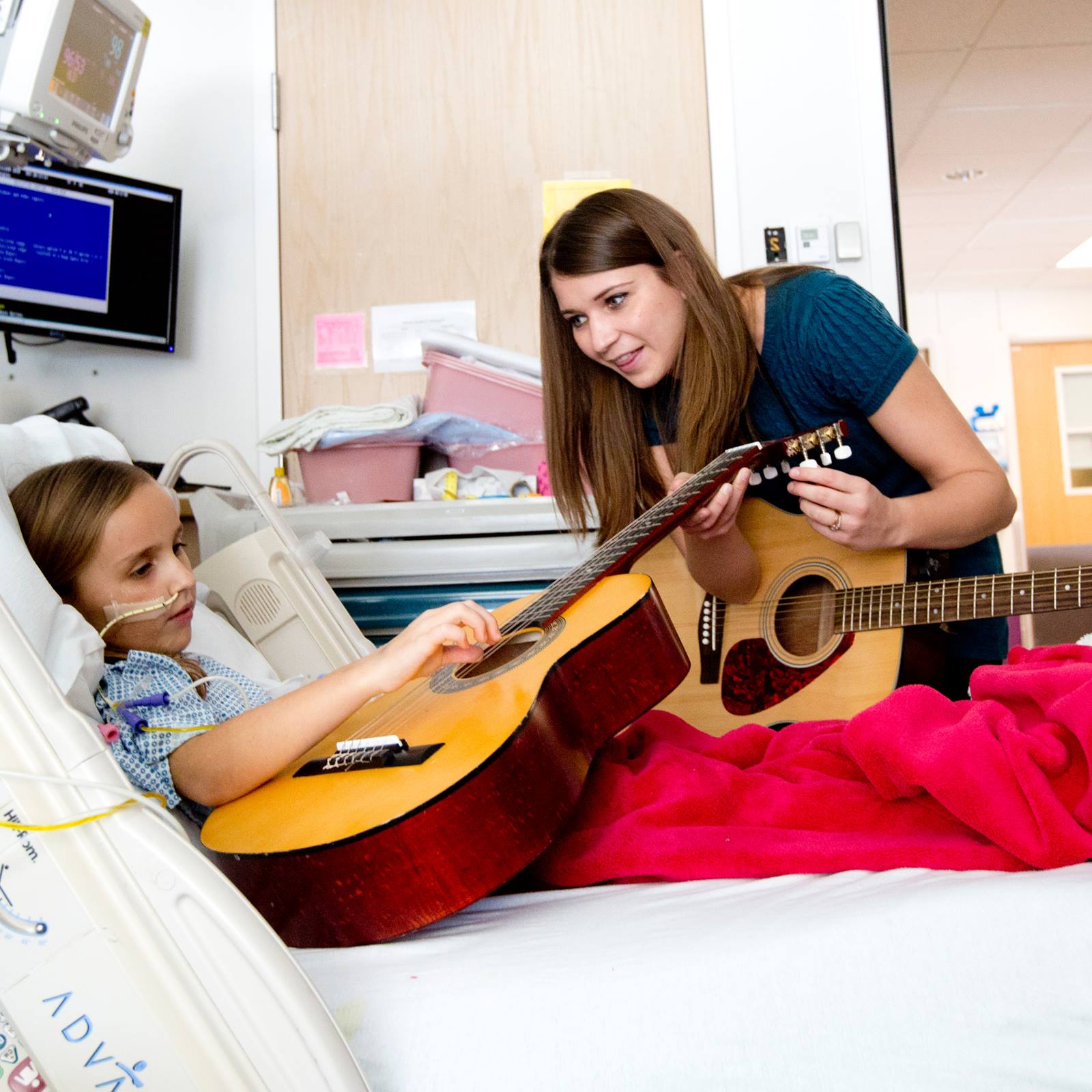Music Therapy in Practice
The following examples show research done in regard to music therapy in a variety of settings. Areas of focus include music therapy and its implications in pain management, medications administered, length of stay, behavior of pediatric patients, customer satisfaction, ambulatory and post-acute setting.
Music therapy in the schools.
There are a variety of reasons to bring a music therapist (MT) in to work with students in the school setting: behavioral issues, special needs, cultural diversity, emotional issues, anxiety and depression. The key is that the MT assesses the school and its distinct needs in order to best serve the students, teachers, and staff. Specific examples are given to describe the unique ability of the MT to tailor her/his services to each school setting, whatever its needs. The following are examples:
Distinction/separation between older and younger students: MT worked with each group on body percussion. The older students came up with ideas and began working with the younger students, leading up to a full performance. Staff and faculty reported increased interaction in the schoolyard between the younger and the older students. The older students developed leadership skills and confidence in their ability to perform musically in front of others.
Bereavement support group: MT co-facilitated a group to support young people who were struggling with bereavement issues. Students brought music to discuss lyrics with the group and share why it was meaningful to them. The MT also facilitated songwriting experiences, in which students had the opportunity to write song lyrics that fit their unique experiences in losing loved ones. Through the support group, students were able to express emotions in a free, healthy environment.
Support/Collaboration with teachers: Upon seeing the effectiveness of songwriting experiences with the students, teachers began asking the MT how this idea could be implemented into teaching and learning in the classroom. This led to the MT engaging with the English teacher to help teach different styles of poetry. The result, as reported by the teacher, was increased interest in the academic material and improved teamwork among the students. The teacher grew in her own confidence of being flexible to teach in a fresh way to engage her students.
McFerran, K. S. (2015). Music therapy in the schools. In B. L. Wheeler (Ed.), Music therapy handbook (pp. 328-338). New York, NY: Guilford Press.
Exploring the effects of music therapy on pediatric pain: Phase 1
The purpose of this study was to assess the effects of music therapy on pain and anxiety in pediatric burn patients during nursing procedures. The results from the qualitative and quantitative data indicated that music therapy reduced pain, anxiety, and behavioral distress. The quantitative data were analyzed and a correlation between engagement in music therapy and lower behavioral distress scores was noted. The results from the qualitative data (interviews with patients, parents, nurses and music therapist) indicated that music therapy reduced pain and anxiety, and that engagement in music therapy enhanced relaxation.
Whitehead-Pleaux, A. M., Zebrowski, N., Baryza, M. J., & Sheridan, R. L. (2007). Exploring the effects of music therapy on pediatric pain: Phase 1. Journal of Music Therapy, XLIV (3), 217-241.
Effects of live music therapy sessions on quality of life indicators, medications administered and hospital length of stay for patients undergoing elective surgical procedures for brain.
The purpose of this study was to assess the effects of live music therapy on patients undergoing elective brain surgical procedures. Anxiety, mood, pain, perception of hospitalization or procedure, relaxation, and stress were measured using a self-report Visual Analog Scale (VAS) for each of these variables. Differences in pretest and posttest scores were analyzed using a Wilcoxon Matched-Pairs Signed-Rank test. Results showed significant differences in music therapy interventions improving four of the six quality of life measures: anxiety, perception of hospitalization, relaxation, and stress.



